Children and crocodile fountain – Railway station square – Stalingrad
Barmaley Fountain
The Barmaley (Russian: Бармалей) is an informal name of a fountain in the city of Volgograd (formerly known as Stalingrad). Its official name is Children’s Khorovod (Round Dance). The statue is of a circle of six children dancing the khorovod around a crocodile. While the original fountain was removed in the 1950s, two replicas were installed in 2013.
The original fountain was installed in 1930 when the Soviet Union was being adorned with various outdoor architectural works, including similar fountains designed by sculptor Romuald Iodko, a co-author of the Girl with an Oar. The Barmaley Fountain was made widely known from several August 1942 photographs by Emmanuil Evzerikhin that juxtaposed the carnage of the Battle of Stalingrad with the image of children at play.
The fountain was restored after World War II and was removed in the 1950s.
The allegory of the monument was derived from the eponymous fairy tale poem Barmaley written in 1925 by Korney Chukovsky. Excerpt (literal translation):
Little children! / For nothing in the world / Do not go to Africa / Do not go to Africa for a walk! // In Africa, there are sharks, / In Africa, there are gorillas, / In Africa, there are large / Evil crocodiles / They will bite you, / Beat and offend you – // Don’t you go, children, / to Africa for a walk / In Africa, there is a robber, / In Africa, there is a villain, / In Africa, there is terrible / Bahr-mah-ley! // He runs about Africa / And eats children – / Nasty, vicious, greedy Barmaley!
While being burned in fire by Barmaley, Doctor Aybolit asked a crocodile brought in by a gorilla to swallow up Barmaley, so that he could no longer harm little children. The crocodile did so, but Barmaley was later released after promising to change. Barmaley became nicer and proclaimed he would be kinder, that he now loved little children and would become a friendly baker.
Text above from Wikipedia.
As with many of the monuments in post-Socialist countries it’s not easy to get definitive and exact information about them. Very often the sources that do exist are contradictory or ask more questions than they answer.
It seems the statue had been removed but then replaced with a replica – but I have no idea what happened to the original.
When I saw the same statue that now sits outside the Volgograd Number 1 railway station on the grass below the Gerhardt Mill (the large building next to the Stalingrad Panorama Museum, demonstrating the extent of the damage during the siege) I thought that it was the original, placed there to protect it from any vandalism. However, that is not certain.
What is omitted from the ‘description’ above is that all the children are Young Pioneers, the youth organisation of the Soviet Union. This is evident from the fact that all of them wear the red neckerchief, part of the uniform of Komsomol members. This might imply a political significance of children dancing around a dangerous animal.
It’s easy to see why the people of Stalingrad adopted this statue. When it was photographed, dirty but mainly intact, surrounded by the destruction wrought by the Nazi invaders’ bombers it represented the determination of the people to resist the fascists. The children stood for the resilience of the Socialist state.
I find the ideas in the poem from which the statue gets one of its names somewhat strange.
The sculptor was Romuald Iodko and the creation date is stated to be 1930.
When I visited Stalingrad in the summer of 2024 the fountain was not working.
Related;
Mamayev Kurgan – The Motherland Calls! – Stalingrad
Stalingrad (Volgograd) Railway Station
Location;
Station Square, Volgograd. In the pedestrian square in front of the main railway station – its original location.
GPS;
48°42′45″N
44°30′49″E








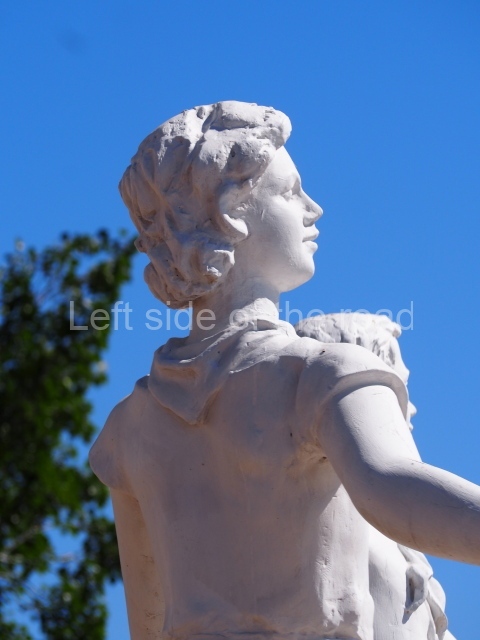
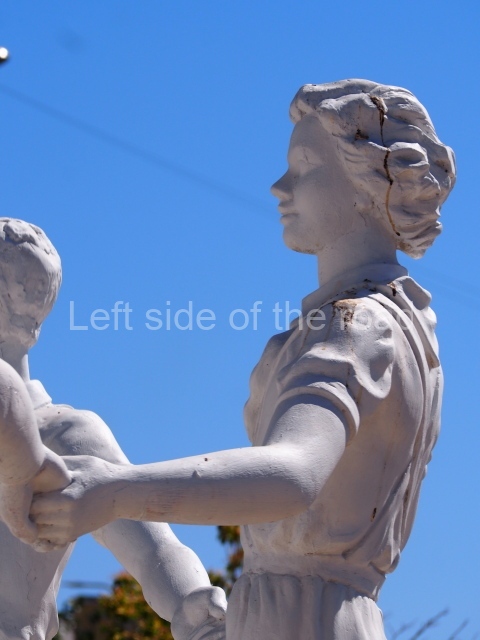
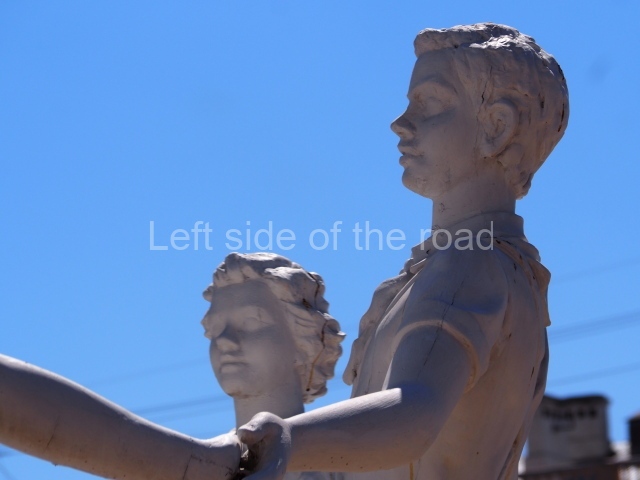
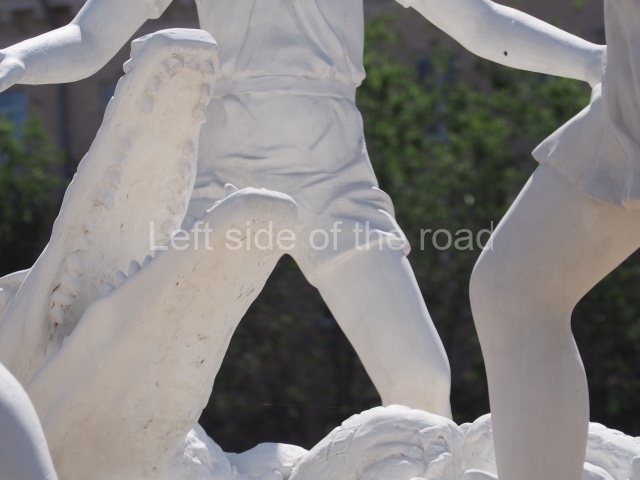
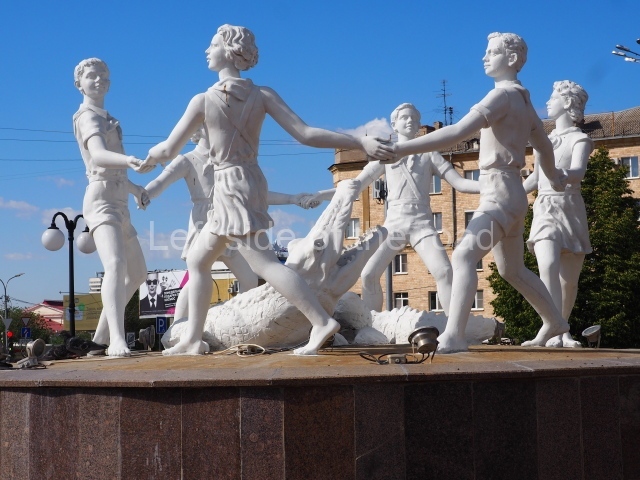
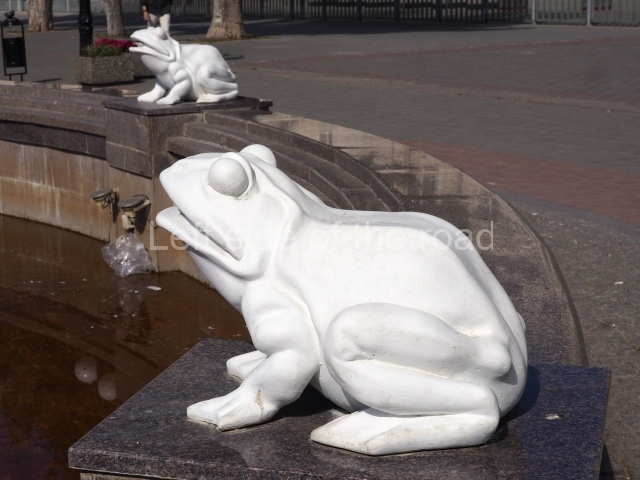
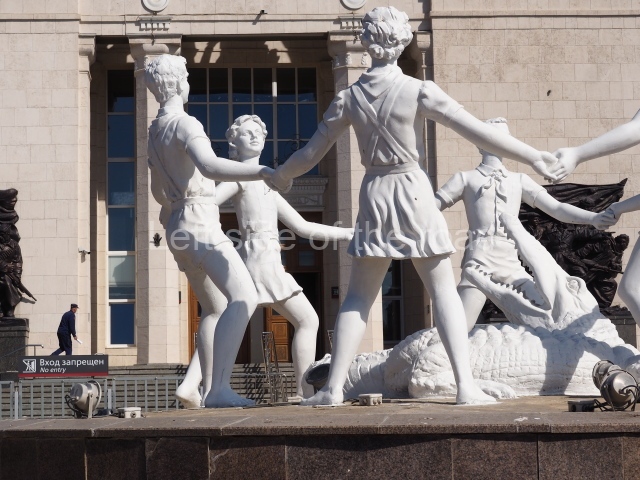
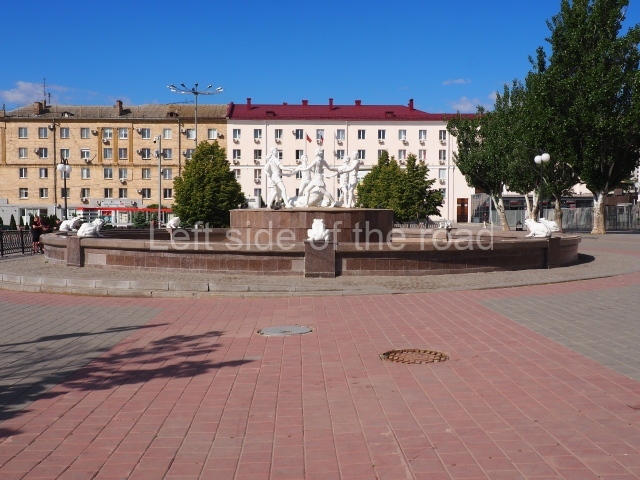
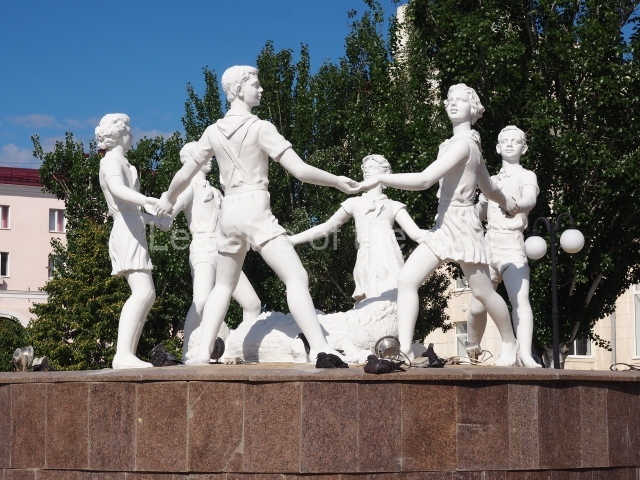
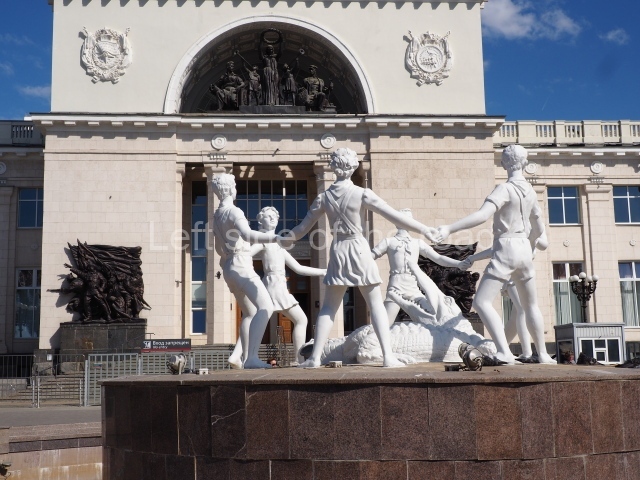
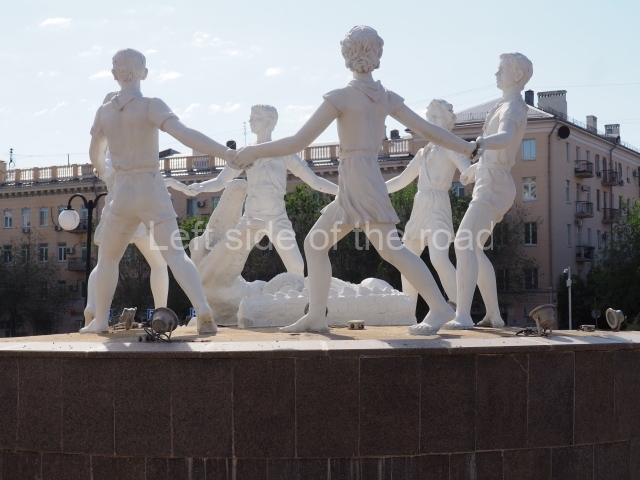
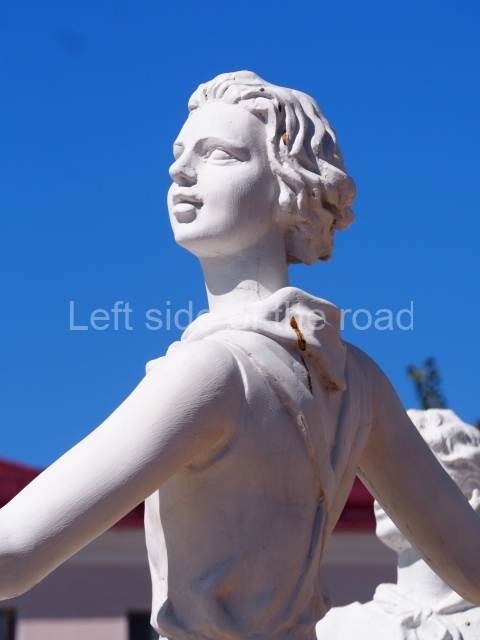
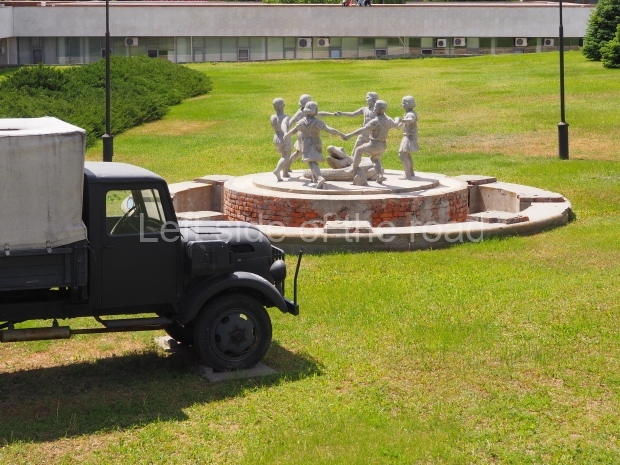
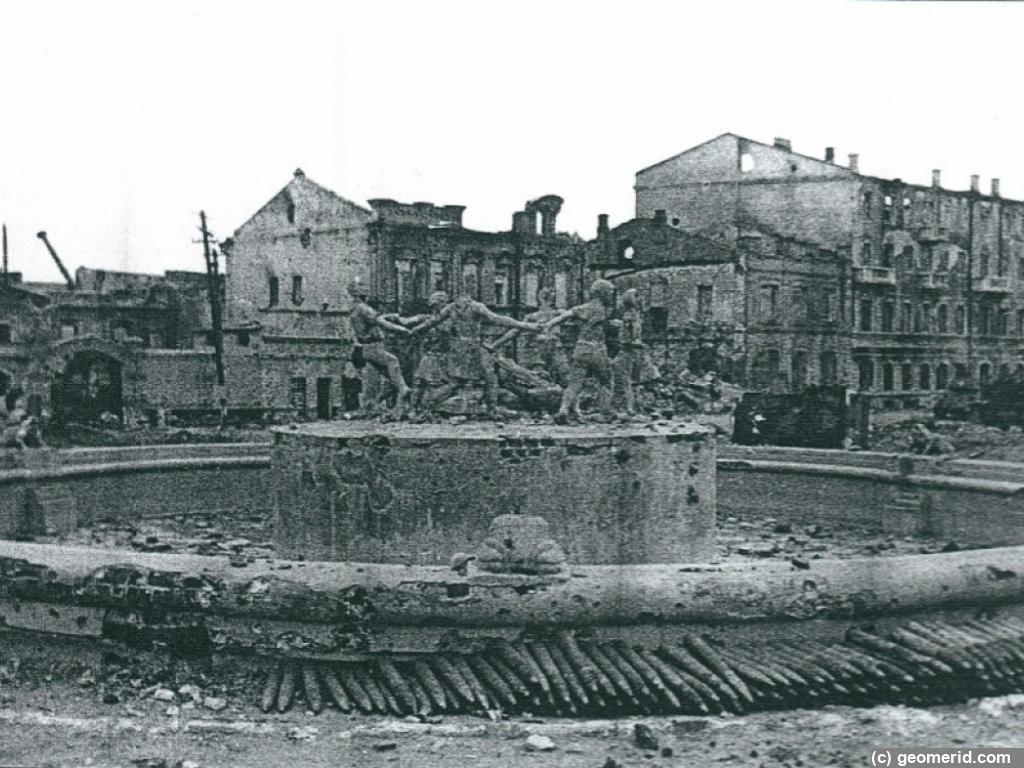
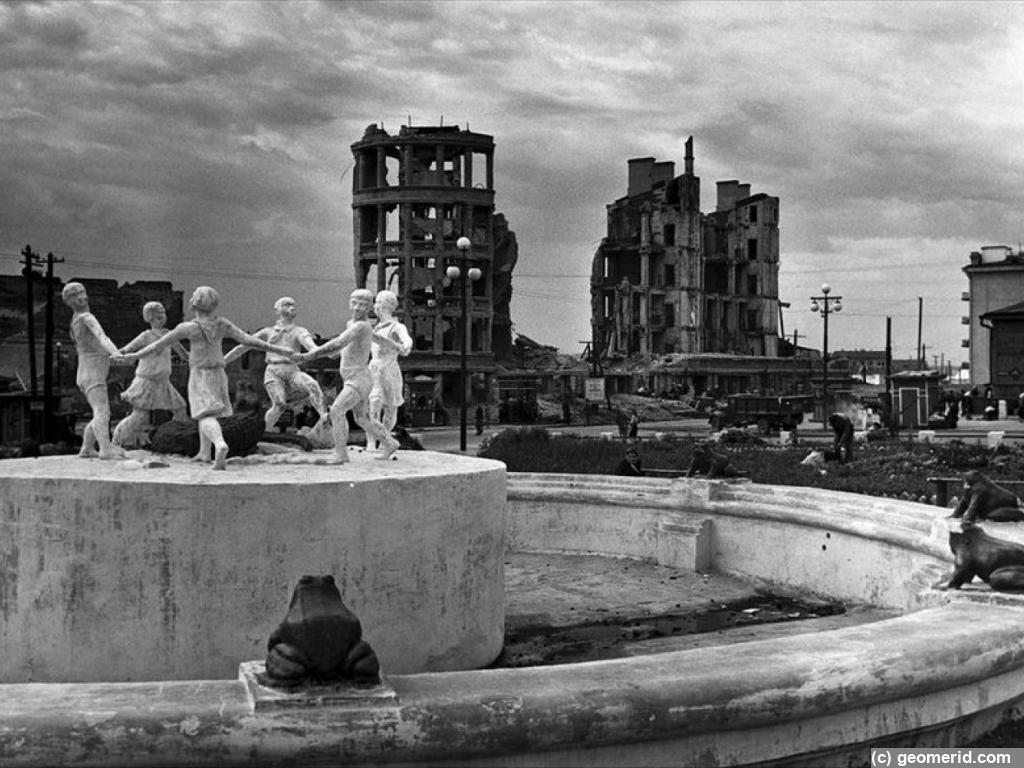
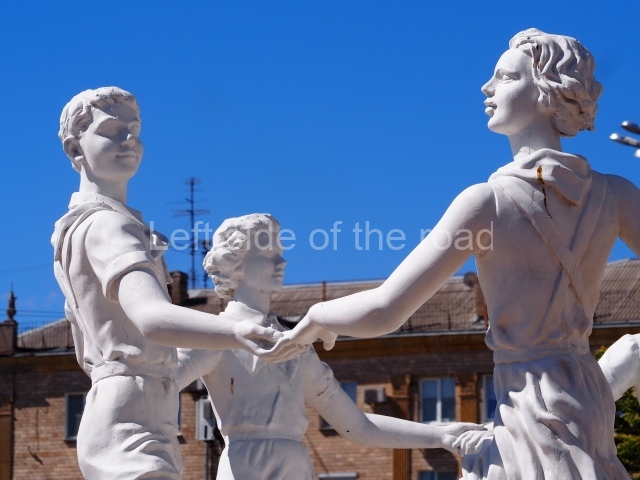
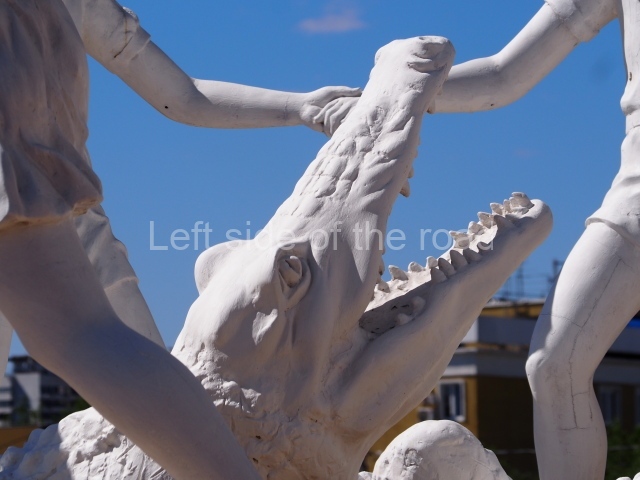
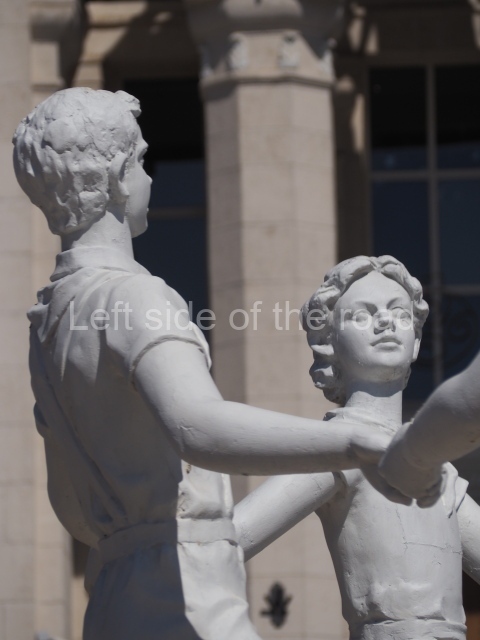
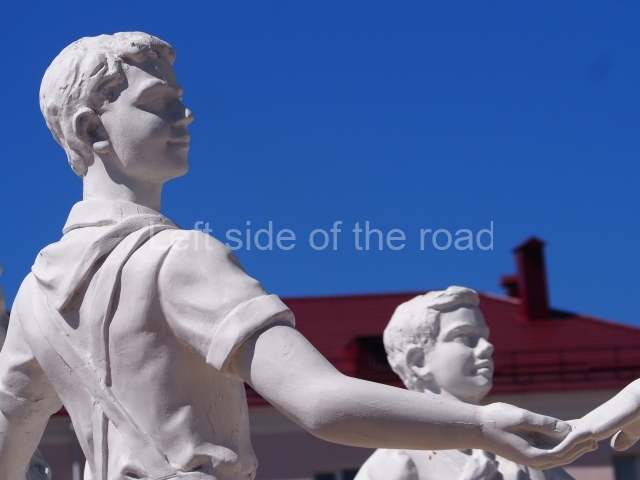
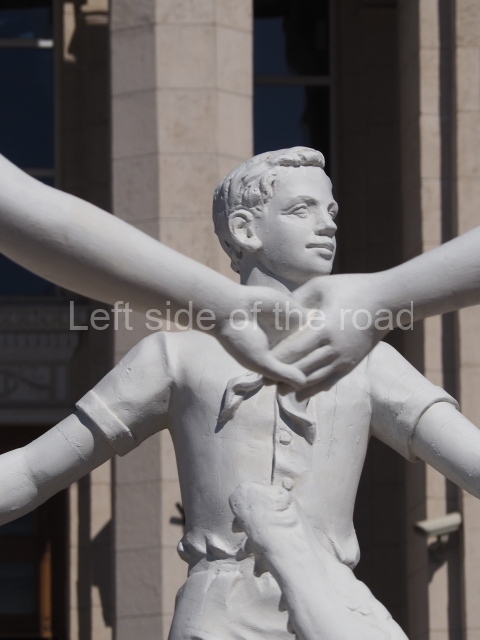
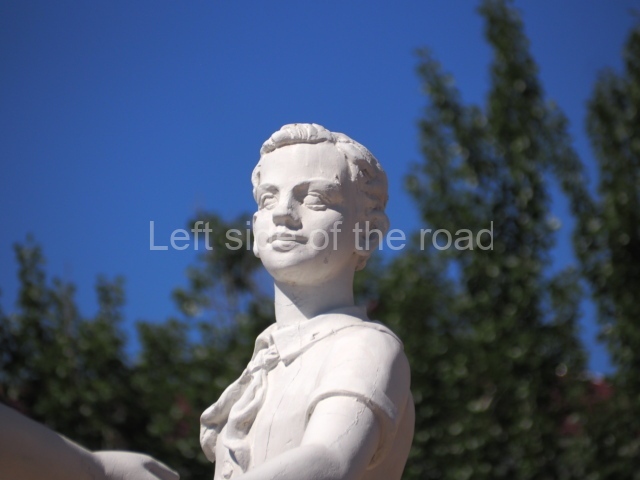
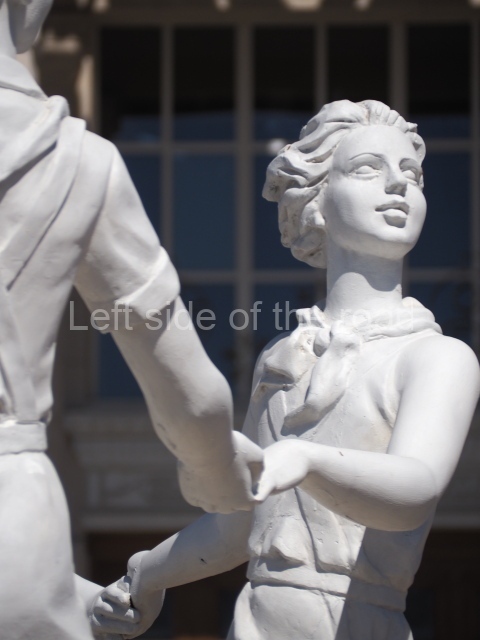
Even with the write-up, it seems like an enigmatic sculpture. I was reminded of Saturn the alligator, but he lived in the Moscow Zoo after WWII. I wonder if the species in the sculpture can be identified.
It’s not easy getting accurate information about many sculptures etc., from the Socialist period in any of the post-Socialist societies. A lot of information might well have been destroyed but there’s also the language issue. Often I come across information just by chance. All I know about this sculpture in Stalingrad is already out there, I’m afraid.